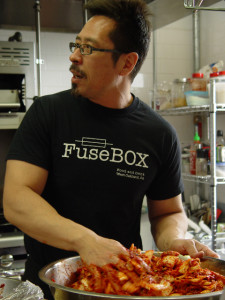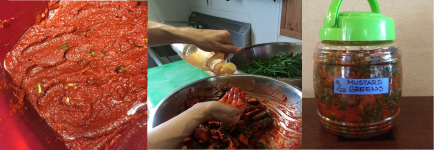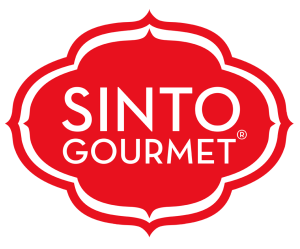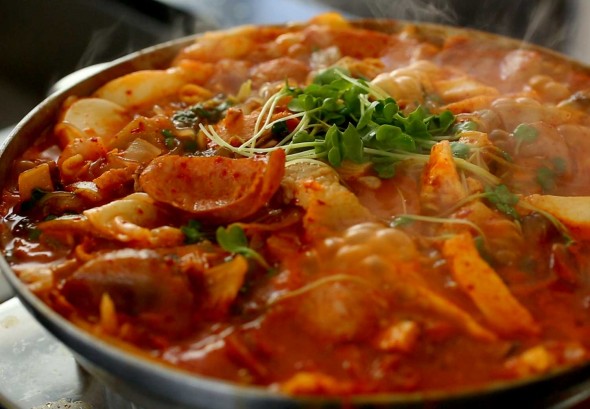[vc_row][vc_column][vc_column_text] [/vc_column_text][/vc_column][/vc_row][vc_row][vc_column width=”1/1″][vc_column_text]
RECIPES | SCHOLARS | MUSIC | EXTRAS | LINKS
[/vc_column_text][/vc_column][/vc_row]
[metaslider id=5279]
This season of Hidden Kitchens was inspired by an issue of the magazine, Public Diplomacy centered on the concept of “gastrodiplomacy,” the idea of sharing a country’s cultural heritage through food, food as a medium of cultural engagement, the use of food as a diplomatic tool to help resolve conflicts and foster connections between nations. Korea it turns out, is one of the nations most involved in branding itself through its food, in using food as a part of it’s “soft power.” The philosophy of the Korean government is to help spread its influence through supporting Korean people to go and open Korean restaurants throughout the world and helping to export and by helping to export and popularize that most ubiquitous of foods—kimchi.
“Kimchi is like air in Korea,” says Hyunjoo Albrecht, a San Francisco-based chef who grew up near the DMZ—the strip of land that serves as a border between South and North Korea. “It always has to be in the refrigerator in every house, a big batch.”
1.5 million tons of kimchi are eaten each year in Korea and there are hundreds of different varieties. Kimchi is not just a cabbage salad, it is essential to the culture of the country. Even the Korean stock market reflects this obsession. They call it the “Kimchi Index” to see when napa cabbage and the 12 other ingredients that go into making kimchi are at the best price. Chili, carrots, radishes, anchovy, green onion, garlic, pickled shrimp…
“When I was young my mom used to make 200 heads of cabbage, wintertime Kimjang,” says Korean cooking star, Maangchi.
Kimjang, the tradition of making kimchi, is an integral part of the communal fabric of Korean life. A coming together of entire villages and neighborhoods to turn hundreds of heads of cabbages into big jars of kimchi to be fermented and aged in underground pots or modern refrigerators and a source of food and deep nutrition for the Korean people who have bourn long eras of deprivation and starvation. The ritual is so vital and yet so endangered as modern life separates families and makes prepared fast foods more popular than slow home ritualized cooking, that UNESCO added the Kimjang tradition to it’s representative list of the intangible cultural heritage of humanity.
“It was the time when the women would gather, gossip, there would be matchmaking,” says Sunhui Chang, chef and owner of the restaurant FuseBox in Oakland, CA, who grew up in Incheon, South Korea. “There would be some marriages that came about during the time of kimchi making.”
Hyunjoo remembers the ritual that took place each November in her village. During that time, she recalled, you wouldn’t greet your neighbors with “Hi how are you” but with “How many heads of cabbage are you doing?”
The kimchi making would travel from house to house through the village. “One person trimming the ginger, one person cutting the cabbage. One person cutting the radish.”
The ritual of making kimchi was a way to bring the community together. Hyunjoo recalls the fights between her mother and a neighbor. “They’re yelling at each other,” she tells us, “and a few days later they’re sitting next to each other cutting cabbage, joking together making food together.”
Chang recalls the sharp gender divisions during Kimjang. “Men weren’t really allowed to be around,” he tells us. “I was always told that if the men started hanging around and touching the kimchi, it would be bad kimchi.”
Kimchi in Space
Korea came late to the space program. For decades after the Korean war of the 1950s the nation barely had enough money to feed itself, let alone send an astronaut into space. Finally, when the country committed to it and went in search of its first astronaut, they chose Soyeon Yi, a woman, who had grown up in Gwanju, South Korea. “When I was a kid, I couldn’t even dare to be an astronaut.” Soyeon told us. “Korea doesn’t even have a space agency.”
Before the government sent Soyeon after contracting with the Russian Space Agency, they worked for nearly a decade to invent Korean space food. Ten essential dishes were created. Two were kimchi. Almost no Korean can imagine a day without kimchi, let alone an entire space expedition.
“Having kimchi in space, you are far from your home planet,” says Soyeon. “When you eat your own traditional food it makes you feel emotionally supported.”
The kimchi, however, had to be radiated to kill all the microorganisms in the probiotic-rich dish. “After radiation the kimchi became so saggy. The kimchi looked like it was 100 years old,” says Soyeon. “I cannot say it’s a really tasteful kimchi but still I like it because I can feel my home.”
K-Pop / K-Food
K-Pop, the popular Korean music genre, burst onto the global scene with the ubiquitous hit Gangnam Style. Now the Korean government is promoting what’s been called K-Food. Byung Hong Park, is in charge of Agriculture, Food and Rural Affairs at the Korean Embassy in Washington, DC. He says the Korean government started to promote Korean cuisine because food is “the best way to have a relationship between countries.”
“The government gave financial support to some of the Korean restaurants in US,” says Hyunjoo who started a line of kimchi called Sinto Gourmet in the US in 2010. “They want more people outside Korea to eat more Korean food.”
The Kimchi Bus
 Si-Hyeon Ryu is a chef, traveler and writer from South Korea. Five years ago he started the Kimchi Bus Project. Since then he’s traveled to 34 countries cooking traditional Korean food and spreading his love of kimchi. His travels, supported by the Korean government, have taken him from the Grand Canyon to Argentina, from Milan to Mount Fuji in Japan. “People on the street they know just about North and South Korea,” he says, but not much about Korean cuisine. “If I explain about kimchi they will understand about Korea.”
Si-Hyeon Ryu is a chef, traveler and writer from South Korea. Five years ago he started the Kimchi Bus Project. Since then he’s traveled to 34 countries cooking traditional Korean food and spreading his love of kimchi. His travels, supported by the Korean government, have taken him from the Grand Canyon to Argentina, from Milan to Mount Fuji in Japan. “People on the street they know just about North and South Korea,” he says, but not much about Korean cuisine. “If I explain about kimchi they will understand about Korea.”
Johanna Mendelson Forman is a research professor at American University in Washington, DC who focuses on the field of gastrodiplomacy. “The Korean government is very conscious of food culture,” she tells us. “The proliferation of Korean restaurants is an extension of that culture. Korea uses that ‘kimchi diplomacy’ as a way of branding itself.”
Astronaut Soyeon Yi describes a night of kimchi diplomacy in space. “I had a special Korean food night,” she told us. “I made dinner for all other six astronauts on the space station. I still remember one of my Russian colleagues, he tried to tell me it’s good. But his face told me …ugh, what the hell it is?”
“I think food is not just a thing we eat for living,” says Soyeon. “Food helps us trust each other. In Korea we have a saying, whoever prepares for you the good meal, the good rice you cannot betray them.”
[symple_divider style=”solid” margin_top=”20px” margin_bottom=”20px”]
Hidden Kitchens: War & Peace & Food is made possible in part by a grant from the National Endowment for the Humanities
[vc_row][vc_column][vc_column_text]
[/vc_column_text][/vc_row][symple_divider style=”solid” margin_top=”20px” margin_bottom=”20px”]
Recipes
[symple_tabgroup]
[symple_tab title=”Mustard Greens Kimchi“]
This recipe comes to us courtesy of Sunhui Chang of FuseBox

INGREDIENTS
Ice water
8 oz. of mustard greens cut to bite-size pieces
2 tablespoons coarse Korean sea salt
1 tablespoon sweet rice flour
1 tablespoon garlic paste (about 5 cloves crushed in a mortar and pestle)
One 1-inch piece fresh ginger, scraped and finely grated on a microplane
2 scallions cut into 1-inch strips
1 medium carrot, peeled and thinly sliced into 3-inch pieces
3 tablespoons finely ground go chu karu (Korean red chile powder)
3 tablespoons coarsely ground go chu karu (Korean red chile powder)
1 tablespoon seau jjot (small salted shrimp, found in the refrigerated section of Korean grocery stores) or fish sauce
¼ cup granulated sugar
¼ Korean Shingo pear, Asian pear or a crisp apple, sliced into thin strips (optional)
DIRECTIONS
Che
In a small saucepan, add the rice flour and ½ cup water. Place over medium-high heat and whisk until thickened, about 2 minutes. Remove from the heat and set aside to cool.
In a large bowl, combine the garlic, ginger, scallions, carrot, apple or pear, fine chile powder, coarse chile pepper, salted shrimp and sugar. Add the rice powder-paste and mix together well till it’s a soft paste. Cover and set aside.
Mustard Greens
Place mustard greens in large stainless steel bowl. Fill with cold water to cover mustard greens. Soak for 15 minutes.
Drain mustard greens in colander. Shake off excess water from mustard greens. Clean bowl.
Return mustard greens to the clean bowl. Sprinkle with 2 tablespoons of the Korean sea salt (You can adjust salt level to taste). Toss the salt with mustard greens by hand. Set aside to soak for 20 minutes. The mustard greens will wilt, as the salt will pull the water from the mustard greens. Toss the mustard greens again and set aside for another 20 minutes.
Pour off 90% of the salted mustard green water from the bowl (This liquid can be saved to make “mool” kimchi, but that’s a whole other recipe.).
Gradually add and mix the Che with the mustard greens. Add the Che according to taste.
Store in a tightly sealed container (a mason jar or stainless steel or even recycled glass tight glass jam jar!) for 2 weeks in the refrigerator or bury it in your backyard.
Enjoy!
[/symple_tab]
[symple_tab title=”Kimchi Fried Rice “]
This recipe comes to us courtesy of Hyunjoo Albrecht of Sinto Gourmet.
Ingredients (Makes 2 portions)
3 strips Bacon, cut into strips about ¼ inch lengths.
1/3 cup Yellow onion, chopped
1 cup Red Napa cabbage Kimchi, drained and chopped with juice saved.
2 cups Steamed white short grain rice, chilled in refrigerator
2 Tbsp Canola or vegetable oil
Salt and pepper
½ Tbsp Butter
2 Eggs cooked sunny side up (Optional)
2 Tbsp Green onion, sliced thin (Optional)
Directions
1. Cook bacon in a 12 inch nonstick skillet over medium-high heat for about 3 minutes until golden brown. Take out bacon from the pan and set aside on a paper towel but leave bacon fat in the pan.
2. In the same pan with bacon fat in it, add the yellow onion and Kimchi. Sauté until the onion becomes translucent and Kimchi is somewhat sweated out for about 3-4 minutes.
3. Add rice in the pan and try to break the lump of rice with an up and down motion using a flat wooden spoon or spatula then stir for about 5 minutes. If the pan gets too dry from rice soaking up the oil, add canola oil or vegetable oil about one tablespoon at a time as you stir fry the mixture of rice, yellow onion, and Kimchi. If you like a stronger Kimchi flavor, add Kimchi juice a tablespoon at a time as you continue to stir fry.
4. Take pan off the heat, add bacon and butter, and mix well
6. Transfer rice to a serving platter, put a cooked egg on top, and sprinkle with green onion before serving.
IMPORTANT: Don’t try to make kimchi fried rice with hot or warm rice. It will turn out incredibly mushy. Use only cold or at least slightly chilled rice.
[/symple_tab]
[symple_tab title=”Army Base Stew“]
This recipe comes to us courtesy of Korean food blogger Maangchi.
Ingredients (Serves 4)
For the stock:
• 2 dried shiitake mushrooms
• 8 large dried anchovies, heads and guts removed, in a soup strainer or tightly wrapped in a cheesecloth
• Dried kelp (a 5 x 6 inch sheet)
• 8 cups water
• 1 teaspoon salt
For the seasoning paste:
• 6 garlic cloves, minced
• 1 tablespoon hot pepper paste
• 2 tablespoons hot pepper flakes
• 1 teaspoon soy sauce
• 1 teaspoon sugar
• 2 tablespoons water
For stew:
• ½ pound pork belly (or pork shoulder), cut into bite size pieces
• 2 ounces of sweet potato starch noodles, soaked in water for 30 minutes and drained
• 1 cup worth cabbage, cut into bite size pieces
• ½ of a medium onion, sliced
• 2 green onions, cut into 1 inch pieces
• ½ cup fermented kimchi, chopped
• 4 ounces of Polish sausage, sliced
• 4 ounces of spam, sliced thinly
• ½ of packaged instant ramyeon
• 1 cup worth radish sprouts (or spinach, watercress, arugula)
• ½ cup worth tofu, sliced (Optional)
• ¼ cup canned baked beans (Optional)
• 12-16 sliced rice cakes (Optional)
• 1 slice of American cheese (Optional)
Directions
Prepare stock:
1. Combine the water, anchovies, mushrooms, and kelp in a large pot. Cover and cook for 25 minutes over medium high heat. Add the pork and cook for another 10 minutes.
2. Remove the pot from the heat. Take out the anchovies, kelp and mushrooms. Slice the mushrooms into bite size pieces.
3. Strain the mixture of the stock and the pork into a large bowl. Put the pork into a small bowl. You will get about 6 cups of stock. Stir in the salt until dissolved.
Make seasoning paste:
1. Combine the seasoning paste ingredients – garlic, hot pepper paste, hot pepper flakes, soy sauce, sugar, and water in a bowl. Mix well.
Arrange the ingredients in a shallow pot (10 to 12 inch):
1. Put the cabbage, onion, green onion, pork, and the mushrooms, on the bottom of the pot.
2. Add the kimchi, and the seasoning paste over top.
3. Add the spam, sausage, rice cake, tofu, baked beans, and cheese.
4. Add the ramyeon and the sweet potato starch noodles.
5. Put radish sprouts on top and add 3 cups of stock.
Cook and serve:
1. Cook over medium high heat. Korean style is to cook at the table with a portable burner. Friends and family will be sitting around the pot, talking and laughing, and maybe drinking. You can take a bit of cooked sausage or the meat with your chopsticks as you wait for the broth to boil and the noodles to soften. If you don’t have a tabletop burner, you can cook it on the stove away from the table.
2. When it starts boiling about 10 minutes later, stir and turn the ingredients over with tongs to cook evenly.
3. Serve right after the noodles and ramyeon have softened. Transfer some cooked stew to individual bowls and serve. Add more stock as the broth boils down.
[/symple_tab]
[symple_tab title=”Korean Cornbread“]
This recipe comes to us courtesy of Korean food blogger Maangchi.
Serves 4-6
Ingredients
2 cups (280 grams) cornmeal
2 tablespoons white sugar
½ teaspoon salt
1 large egg
1 tablespoon vegetable oil
1½ cup milk
2 teaspoons baking powder
1 tablespoon butter, softened at room temperature
Directions
1. Combine the cornmeal, sugar, salt, egg, vegetable oil, and milk in a bowl and mix well. Let it sit for 20 minutes.
2. Pre-heat the oven 400 degrees F (about 200 degrees C).
3. Add the baking powder to the batter and mix well. Brush the butter all over the bottom and the sides of baking pan (8 x 8 inch square). 1. Bake for 30 minutes.
4. Check to see if it’s fully cooked by inserting a toothpick into the center of the bread. It should come out clean. You can cook a few minutes longer to brown the top of the bread.
5. Remove from the oven. Turn the pan upside down and let the cornbread fall onto your cutting board. Let cool for a few minutes. Cut into bite size pieces and serve. You can freeze leftovers in a plastic bag and reheat it in a microwave oven, where the fluffiness and moisture will be revived.
[/symple_tab]
[/symple_tabgroup]
[symple_divider style=”solid” margin_top=”20px” margin_bottom=”20px”][vc_row][vc_column][vc_column_text]
Humanists & Scholars

Johanna Mendelson-Forman
Adjunct Professor, School of International Service
American University

Paul Rockower
Executive Director
Levantine Public Diplomacy

Sam Chapple-Sokol
Culinary Diplomat
For additional academic references, please see the following publications:
Public Diplomacy Magazine GastroDiplomacy (Issue 11, Winter 2014)
Rockower, P. S. (2012). Recipes for gastrodiplomacy. Place Brand Public Diplomacy Place Branding and Public Diplomacy, 8(3), 235-246.
[symple_divider style=”solid” margin_top=”20px” margin_bottom=”20px”]
Music from Kimchi Diplomacy
Playlist
Solar Diamonds, Bernard Herrman
The Calamari Retribution, A Ballad for Kimchi
White Man Sleeps, Kevin Volans
[symple_divider style=”solid” margin_top=”20px” margin_bottom=”20px”]
Extras
Soyeon Yi
Soyeon Yi is a South Korean scientist and Ph.D. graduate of KAIST. On April 8, 2008, she became the first Korean and the second Asian woman to fly in space.
Excerpt from Soyeon’s interview
My name is Soyeon and I’m originally from Korea. 8 or 9 years ago I became the first Korean astronaut to visit the Soyez international space station.
When I was 6 or 7 years old, a lot of TV stations translated Japanese animation to Korean. Every Sunday morning, I watched an animation on space exploration. Older generation sci-fi animations always have one female scientist in a space ship or space station. Not many. Only one. She’s pretty, she’s wise, and whenever materialistic guys fight against each other, she goes and mediates and makes them peaceful. If someone hurt or had some disease or some kind of pain she would always be a doctor and she would go take care of them. I told my mom I wanted to be the only female astronaut in a spaceship. Because I said those kind of words everyday, my mom didn’t blink at all. She said “Oh yeah, you can do that.”
When I was in my PhD course, I read about [the astronaut program] in the newspaper. I thought “I would love to apply, even if I do not fly, because this is a historical point in Korea’s scientific history.” When I was in the space capsule in Russia, I was the only female and I was a doctor. I realized, “oh my god, I made my dreams come true.”
[read more=”Read more” less=”Read less”]
Wherever you go when you travel, food is one of the most important things to pack. So the Korean government decided to develop ten different types of Korean space food during Korea’s international flight. Simple things are already made by the Italian, French, American, Russian, so we wanted to make something special. Kimchi, ginseng pea, rice, spicy pepper sauce, miso soup–Korean style, fermented style.
I really loved it, especially when we shared with each other. There were six different nations; I was the only Korean. I became the host of Korean space food. We had a huge dinner, and everybody loved it. One of my friends, Garrett Reisman, said, “Don’t eat your space food anymore, stop it…you will go back to the ground and you can have enough Korean food after getting down, but I’m going to be here for 6 months, and I’m going to need Korean food for the rest of my flight.” It made me so happy. He loved Korean food.
In Korea, we have a saying. Who ever gave you the good meals or good rice, or prepares you dinner, you cannot betray them. That is the heart of them, and that is a deep emotional expression if somebody serves you a meal. That’s a universal culture. If you share some food–serve for others dinner or lunch, it makes a really strong bond. Food is not just what we eat to live, I think food is something more than that. It helps us to build trust in each other. Especially about Kimchi. In Korea there are more than a hundred kinds of Kimchi. So when I have a meal at my mom’s place, there’s more than 5 Kim chi on the table. In Korea, among the friends, they love to share recipes with each other. My recipe’s from my grandma, and my grandma from her grandma. I still remember when we made new Kimchi. I always delivered it to my mom’s friend’s house. I knocked on the door, I tell my friend’s mom “here’s my kimchi, and you can try it.” Some of my friends also came to my place with their kimchi. We talk, we share how we feel, how we taste, and then how we can improve each other’s. If I taste really good Kimchi, I’d tell my mom, and then my mom would go to my friend’s house and ask how they made it. Kimchi is not just cabbage salad, but families binding.
You know how important kimchi is because there are 10 different kinds of Korean space food and two of them are kimchi. One is freeze-dried and the other is canned. For the freeze-dried one, you add water and then shake it and then you swallow it and more similar to the kimchi, but not exactly kimchi. Canned kimchi is kind of interesting. Kimchi is made from fermentation. It means there’s a lot of microorganisms in there, but it’s prohibited to bring any small microorganisms into a space station. The Atomic Energy Research Institute does radiation on the kimchi to kill all small microorganisms, so even if they made the best kimchi in Korea to send to space, after radiation, kimchi becomes so saggy. So I cannot say it’s really tasteful kimchi but still I like it because I really miss any Korean food. When you eat your own food, when you eat your own traditional food, that makes you feel kind of stable and emotionally supported.
Space is a quite fair place. Women can do whatever we want to do; we don’t need huge strength like a guy’s. In space, I feel not like a “female astronaut” but a member of the whole team. On the ground, to do really heavy and hard job, of course, to–better to have more muscle, better to be more strong kind of things, but, as everybody knows, space is weightlessness.
Now I’m lecturing at college and doing some inspirational speaking. I talk about my space flight, how I prepare for my flight, how I feel to be a representative of my whole country when I go to space. I title my talk, “Mindfulness from Weightlessness” because I have a lot of inspirational ideas from space, coming in from my brain and heart and all my body, this really overwhelming feeling.
I realized how small I am compared with the whole Earth and the whole universe, and how randomly everything has happened, but still I’m breathing, I have my lovely family, still I have all I had. I feel so grateful for where I was born, what I was born with, and all the people around me who love me, hate me, teach me, complain about me, anything.
[/read]
The Influence of War on Korean Food
Budae-jjigae a.k.a “Army Base Stew”
from Maangchi
It’s a spicy, savory, Korean-American fusion dish made from an umami-rich broth, Korean hot pepper paste, flakes, kimchi, and American Spam, beans, and sausage.
This dish was invented after the Korean war (1950-1953) when the American army was stationed in the city of Uijeongbu, near Seoul. They had their own food on the base, things like canned beans, meat, Spam, ham, and sausages. This food was totally new to Koreans. Eventually these ingredients made their way into surrounding area of the base and some creative Koreans made stew from them. They boiled spam, ham, sausages, and baked beans with kimchi, garlic, and hot pepper paste and flakes, creating a Korean-style stew with American ingredients.
Cornbread
After the Korean War, the United States government provided Korea primary schools with cornmeal as part of their Cooperative for American Remittance to Everywhere (CARE) program. The cornmeal was used to bake cornbread, which became a staple in all Korean school cafeterias during the postwar years.
We first learned about the Korean-style cornbread from Nicole Choi’s “True Grit” article in Roads and Kingdoms. Nicole is a graduate of the University of Maryland, College Park. She currently teaches English at a high school in Washington, D.C.
Listen to Nicole talk about the cornbread that her mother had as a child in Korea after the Korean War.
[soundcloud url=”https://api.soundcloud.com/tracks/278836842″ params=”color=ff5500&inverse=false&auto_play=false&show_user=true” width=”100%” height=”20″ iframe=”true” /]
[symple_divider style=”solid” margin_top=”20px” margin_bottom=”20px”]
Links
 |
 |
||||
| Sinto Gourmet | Slow Food Korea | ||||





